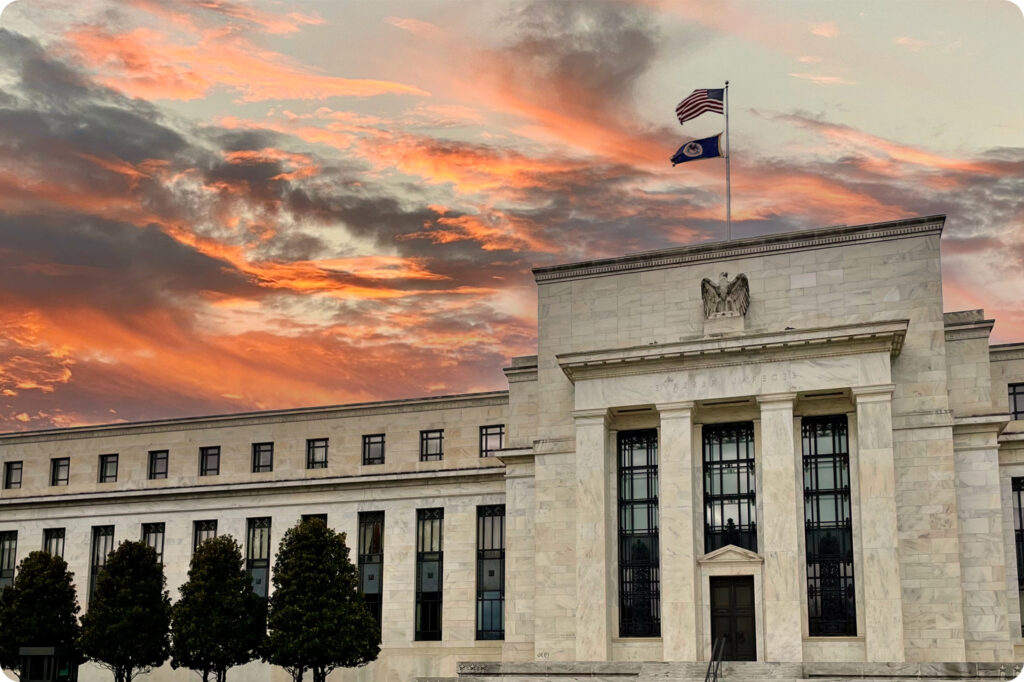The top five climate risk stories this week.
Vanguard exits Net Zero Asset Managers initiative

The world’s second-largest asset manager has quit a leading climate finance alliance in a bid to resolve “confusion” over its net-zero approach.
On Wednesday, Vanguard — which has USD$7.1trn in assets under management — said it is withdrawing from the Net Zero Asset Managers Initiative (NZAMI) to provide “clarity” to investors about “the role of index funds and about how we think about material risks, including climate-related risks.”
The NZAMI launched in December 2020 and joined the Glasgow Financial Alliance for Net Zero (GFANZ) last year. GFANZ is a coalition of banks, insurers, asset owners, and other financial institutions committed to decarbonization. The NZAMI had 291 members with USD$66trn in assets as of November 9. Members of the initiative commit to support investing aligned with net-zero emissions by 2050 or sooner. To this end, members pledge to progressively increase their share of assets aligned with net-zero goals until 100% of their portfolios are covered.
Eighty percent of Vanguard’s client assets are invested in passive funds that track market indices, like the S&P 500. This means the asset manager does not pick and choose the investment securities itself, making it tricky to align passive funds with net-zero objectives. Vanguard said alliances like the NZAMI can cause confusion “about the views of individual investment firms …. particularly regarding the applicability of net zero approaches to the broadly diversified index funds favored by many Vanguard investors.”
Vanguard’s departure from the NZAMI comes amid heightened scrutiny of environmental, social, and governance (ESG) investing by US Republicans. In November, 13 Republican attorneys-general filed a motion to the Federal Energy Regulatory Commission challenging the asset manager’s attempt to renew its authorization to buy shares in US utilities. The challenge claimed Vanguard’s NZAMI membership meant it was no longer a passive investor in public utilities and therefore should be barred from holding their securities.
Climate groups lamented Vanguard’s decision. Kirsten Snow Spalding, vice president of the Ceres Investor Network — a founding partner of NZAMI — said the initiative “regrets” Vanguard’s withdrawal. “It is unfortunate that political pressure is impacting this crucial economic imperative and attempting to block companies from effectively managing risks — a crucial part of their fiduciary duty,” she said.
“While Net Zero Asset Managers recognize that there are challenges with measuring the alignment of passive portfolios with a 1.5°C temperature rise limit and moving the companies in the index funds to rapidly decarbonize, these challenges can only be met by strong commitments to transitioning to the zero emissions economy by investors, companies and policymakers.”
Vanguard said it will continue to offer net-zero aligned investment products and engage with portfolio companies to understand how they approach climate risks. The asset manager also promised to continue to disclose its own efforts to tackle climate risks to clients’ investments.
Federal Reserve unveils climate risk guidance

The Federal Reserve issued draft principles for large banks on how to manage their climate risks.
The guidance, which would apply to banks over USD$100bn in size, provides a “high-level framework” for dealing with climate transition and physical threats that could undermine US financial stability if left unchecked. Interested parties have until February 6 to comment on the principles.
“Weaknesses in how financial institutions identify, measure, monitor, and control potential climate-related risks could adversely affect financial institutions’ safety and soundness, as well as the stability of the overall financial system,” the Fed wrote.
The principles say banks’ boards should oversee climate risks and establish accountability mechanisms for climate matters. Boards should also consider aligning employee pay with climate risk management objectives. With respect to bank managers, the principles say they should incorporate climate change into risk policies, procedures, and limits. They should also consider climate risks when developing strategy and making capital allocation decisions.
The Fed says banks should set up climate scenario analysis frameworks to help managers identify gaps in their climate data, risk assessment methodologies, and risk management.
The Fed’s principles draw on similar climate risk guidance that was published by the Office of the Comptroller of the Currency last December and the Federal Deposit Insurance Corporation in March this year.
Climate credit risks should be captured in banking rules — regulators

Banks should consider adjusting borrowers’ credit ratings to reflect climate-related financial risks, a global standard-setter has said.
On Thursday, the Basel Committee on Banking Supervision (BCBS) released a batch of frequently asked questions on how climate risks can be incorporated into existing global banking rules that tell lenders how much capital to set aside against their credit, market, and operational risks.
On credit risk, the BCBS said banks should “integrate climate-related financial risks either in their own credit risk assessment or when performing due diligence on external ratings.” When using external credit rating scales that don’t capture climate risks, it said banks should consider making “adjustments as appropriate.” When there’s not enough data to make accurate predictions, the BCBS said banks should take a conservative approach to estimating the creditworthiness of climate risk prone borrowers.
The FAQs told banks to “iteratively and progressively” consider how climate change could affect the forward-looking economic forecasts used for their in-house stress testing processes. Banks conduct internal stress tests to ensure they have enough capital to withstand economic and financial shocks.
However, the BCBS did not budge on calls from climate advocates to change the rules on how much capital to put aside against fossil fuel exposures. “[G]athering more historical data will not help banks address climate-related financial risk. For that, fundamental changes to the Basel Framework are needed,” said Julia Symons, head of research and advocacy at Finance Watch. “We see it as part of the Basel Committee’s financial stability mandate to take a step further and recognise the higher risks of specific assets under Pillar I, such as fossil fuel exposures.”
Norway’s sovereign wealth fund may punish net-zero laggards

Norway’s USD$1.3trn sovereign wealth fund will push the companies it invests in to align with net-zero emissions by 2050 and may vote against those that fail to do so.
In a Thursday update to its investment strategy, Norges Bank Investment Management (NBIM) said it “will ask companies to commit to business activities aligned with net zero emissions by 2050 and to set short- and medium-term reduction goals for direct and material indirect emissions.” On Wednesday at a Financial Times event, NBIM chief executive Nicolai Tangen said the fund would “absolutely” vote against company directors and boards that don’t have a net-zero target.
NBIM’s strategy also identifies climate risk and opportunity management as a “key priority.” The fund says it will integrate climate risk measures into its portfolio analysis to best manage risks and maximize opportunities.
NBIM invests the proceeds of Norway’s oil and gas revenues on behalf of the country’s citizens. It is the largest sovereign wealth fund in the world.
Crédit Agricole to stop new oil financing

France’s second-largest bank will stop financing new oil fields and cut its exposure to oil exploration by 25% by 2025 under new decarbonization targets published Tuesday. However, the bank stopped short of making the same pledge for new natural gas projects.
Crédit Agricole also clarified its 2030 financed emissions targets for the oil and gas and automotive sectors and released new targets covering power, commercial real estate, and cement. It promised to release targets in 2023 for five additional sectors — shipping, aviation, steel, residential real estate, and agriculture. Together, these 10 sectoral targets will cover 60% of Crédit Agricole’s outstanding loan exposures. The bank says all targets align with its carbon neutrality by 2050 goal.
Reclaim Finance, a French sustainability nonprofit, called the bank’s latest targets “a step forward” but criticized its silence on gas expansion financing. French banks Crédit Mutuel and La Banque Postale have both stopped supporting new gas projects in line with the International Energy Agency’s Net Zero by 2050 scenario.
Crédit Agricole currently has around €24.7bn (USD$26.1bn) of oil and gas exposures, representing 1.3% of its total portfolio. The bank’s 2030 financed emissions targets are:
- Oil and Gas: 30% reduction in absolute carbon dioxide-equivalent (CO2e) emissions, covering Scope 1 and Scope 2 emissions, as well as the Scope 3 emissions of upstream oil and gas
- Power: 58% reduction in CO2e emissions per kilowatt hour of energy produced, covering Scope 1 and Scope 2 emissions
- Automotive: 50% cut in CO2e emitted per kilometer driven by manufactured vehicles
- Commercial real estate: 40% cut in CO2e emitted per square meter per year by corporate customers’ and real estate professional buildings
- Cement: -20% reduction in CO2e emitted per ton of cement produced by customers

